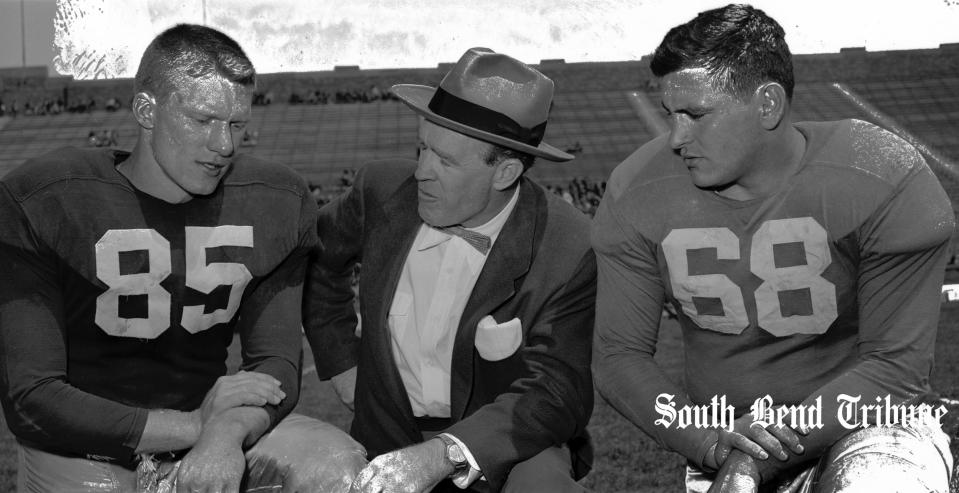'Desirable' business that fizzled: When college football came to Rehoboth Beach
“Baseball is called our national game,” the Milford Chronicle declared on Sept. 19, 1930, “and yet it does not seem to arouse the intense enthusiasm that is created by football … Something in football thrills the hearts of the people. It is full of dramatic surprises, it has the clash and conflict of a real fight, so that people love it.”
In the 1930s, the infant National Football League was just beginning to garner creditability, which allowed college football to become the king of fall sports; and in 1931, college football came to Rehoboth.
On Aug. 21, the Delaware Coast News announced, “The Georgetown University Football Team will establish its training quarters here starting September 1st and will remain until September 19th. There will be 54 players in the squad and the entire assembly will consist of 70 men. They will make their headquarters at the Hotel Henlopen.”

At the time, Georgetown University was considered a powerhouse in college football. Led by head coach, Tom Mills, and his four assistants (including the legendary Frank Leahy, who went on to win fame as a coach at Notre Dame), the Georgetown team traveled to Rehoboth, where they checked into the Hotel Henlopen. Coach Mills then assembled the squad on the beach and conducted a workout on the heavy sand.
Most of the workouts were held on Walter J. Dick’s farm, where a temporary football field had been laid out, goal post erected, and tracking dummies put into place.
Two weeks before the team arrived, the field had been graded, rolled and planted with a special fast-growing grass seed. Football fans from all over the Delmarva Peninsula gathered to watch the two daily practice sessions on the Dick farm.
RARE FIND: Purple pearl discovered by diner in his clam at Rehoboth Beach restaurant
On Aug. 21, the Delaware Coast News noted, “After the first week, scrimmages will be held and on one or two occasions the squad will hold practices on the beach front in order to strengthen their legs and pulling power.”
Each morning began with a breakfast approved by the team’s trainer, followed by a quick trip to the Dick farm for practice. After lunch, the team returned to the practice field for another two-hour workout. By the end of the day, most players were exhausted, and they reportedly hit the hay every evening between 8 and 8:30 o’clock. After a few days of practice at Rehoboth, most of the players were sunburned, but otherwise in good shape.
The leaders of Rehoboth considered the football training camp a “desirable class of business,” and they saw it as a valuable addition to the fall shoulder season.

On Sept. 18, the Delaware Coast News commented, “Already plans are being made to establish a permanent sports field as a nucleus around which to build facilities that will attract and properly provide for athletic groups who indulge in training periods away from home … It will be a welcome addition to the growing resort business and will help answer the problem of how to extend the fall season which is conceded as being the most beautiful season of the year in Rehoboth.”
The Milford Chronicle repeated an all-too familiar claim, “Educators think that the students devote too much time and energy and though to this sport. But the college alumni keep demanding that their alma mater strengthen its football team, and will contribute liberally for expensive coaches and equipment. Producing a winning football team seems to do more to push a college ahead in popularity, than producing a superior record for scholarship among its students.”
PARKING AT THE BEACH: Everything you need to know from hourly rates to free travel options
Football may have been a “desirable class of business” for Rehoboth, but the dream that the resort would become a training center for college teams failed to materialize.
Principal sources
Milford Chronicle, Sept. 19, 1930
Delaware Coast News, Aug. 21, Aug. 28, Sept. 4, Sept. 11, 1931.
This article originally appeared on Salisbury Daily Times: When college football came to Rehoboth Beach

